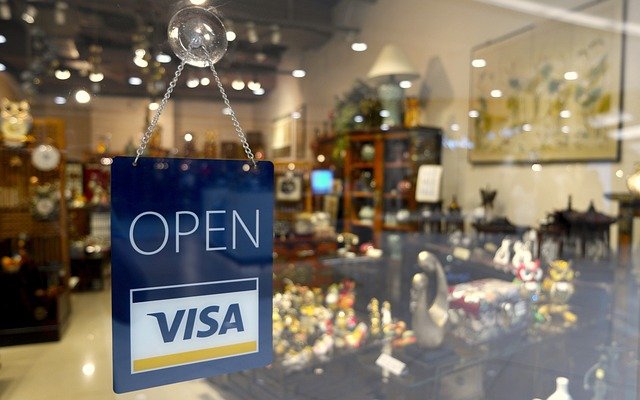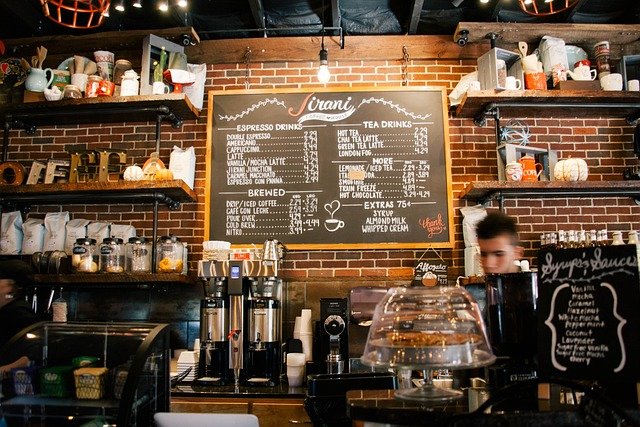Understanding Customer Requirements
Table of Contents
Understanding Customer Requirements (2)
Understanding customer requirements is crucial for businesses, especially in the service sector, where intangible offerings require a deep understanding of consumer behavior and expectations. This article explores consumer behavior in services, customer expectations, and service quality gaps, providing insights into how businesses can effectively tailor their offerings to meet customer needs.

Consumer Behavior in Services [ Understanding Customer Requirements ]
Consumer behavior in the service industry is influenced by various factors that shape how individuals make decisions regarding the selection, purchase, and use of services. Understanding these factors is crucial for businesses aiming to tailor their offerings and enhance customer satisfaction. Below are the primary factors influencing consumer behavior in services:
1. Psychological Factors
These factors encompass individual mental processes that affect consumer choices, including:
- Perception: How consumers view a service based on their experiences, advertising, and word-of-mouth influences their expectations and satisfaction levels.
- Motivation: The underlying reasons driving consumers to seek certain services, such as the desire for convenience, status, or emotional fulfillment.
- Learning: Past experiences with a service can shape future behavior. Positive experiences can lead to repeat purchases, while negative experiences may deter future use.
- Attitudes: Consumers’ overall evaluations of a service can significantly impact their willingness to engage.
2. Social Factors
Social influences play a vital role in shaping consumer behavior. These include:
- Family and Friends: Recommendations or opinions from family and friends can heavily influence decisions, especially for services like dining or travel.
- Cultural Influences: Cultural background affects preferences and expectations regarding services. For instance, certain cultures may prioritize customer service differently than others.
- Social Status: Consumers may choose services that reflect their social status or aspirations, such as opting for luxury hotels or exclusive dining experiences.
3. Personal Factors
Individual characteristics also impact consumer behavior:
- Age and Life Cycle Stage: Different age groups have varying needs and preferences. For example, younger consumers may prefer fast-casual dining, while older adults might seek fine dining experiences.
- Income Level: A consumer’s financial situation influences their choice of services. Higher-income often allows for more premium service options.
- Occupation: Certain professions may dictate specific service needs; business professionals might require efficient travel services.
4. Economic Factors
The broader economic environment can significantly affect consumer behavior:
- Economic Conditions: During economic downturns, consumers may cut back on discretionary spending, impacting service industries such as hospitality and entertainment.
- Consumer Confidence: High consumer confidence levels typically lead to increased spending on services, while low confidence can lead to more cautious spending behaviors.
5. Technological Factors
The rise of technology has transformed how consumers interact with services:
- Online Reviews and Ratings: Consumers increasingly rely on online reviews to inform their decisions about services. Positive reviews can enhance credibility, while negative reviews can deter potential customers.
- Digital Platforms: The availability of apps and websites for booking services has made it easier for consumers to compare options and make informed choices quickly.
6. Situational Factors
Contextual elements can also influence consumer decisions:
- Physical Environment: The ambiance of a service location (e.g., cleanliness, decor) can affect consumer perceptions and satisfaction.
- Time Constraints: Consumers may prioritize speed and efficiency in service delivery when pressed for time, such as during lunch breaks or travel.
Example of Consumer Behavior in Services
When selecting a financial service like GCash for mobile payments, a consumer goes through several stages influenced by these factors:
- Problem Recognition: The consumer realizes the need for a convenient payment method due to frequent cash shortages or long ATM lines.
- Information Search: They research digital wallets by reading online reviews, asking friends for recommendations, and comparing features like security and fees.
- Evaluation of Alternatives: The consumer evaluates GCash against competitors based on user experience, security measures, and additional features such as promotional offers.
- Purchase Decision: After weighing the options, they download GCash due to its positive reviews and perceived reliability.
- Post-Purchase Evaluation: Following usage, the consumer assesses whether GCash meets their expectations regarding convenience and security. Positive experiences may lead them to recommend it to others.
Consumer Decision-Making Process for Services [ Understanding Customer Requirements ]
Consumer decision-making involves several stages: problem recognition, information search, evaluation of alternatives, purchase decision, and post-purchase evaluation. In services, this process is often more complex due to the intangible nature of the offerings.
Stages of Consumer Decision-Making
1. Problem Recognition
This initial stage occurs when a consumer identifies a need or problem that requires a solution. The recognition can stem from internal stimuli (like personal desires or needs) or external stimuli (such as advertisements or recommendations). For instance, a consumer might realize they need a more efficient way to manage their finances after experiencing difficulties with cash transactions.
2. Information Search
Once the need is acknowledged, the consumer embarks on an information search to explore potential solutions. This search can be active, involving online research, reading reviews, or consulting friends and family, or passive, such as noticing advertisements. The goal is to gather sufficient information about available options to make an informed decision
3. Evaluation of Alternatives
After gathering information, consumers evaluate different options based on the most important criteria. This evaluation often includes comparing features such as price, quality, security, convenience, and brand reputation. Consumers weigh the pros and cons of each alternative to determine which best meets their needs.
4. Purchase Decision
Once the evaluation is complete, the consumer makes a purchase decision. This stage involves choosing the product or service that best meets their needs and preferences. Factors influencing this decision include promotional offers, peer recommendations, and perceived value.
5. Post-Purchase Evaluation
The final stage occurs after the purchase has been made. Consumers reflect on their experience with the product or service to determine if it met their expectations. This evaluation can influence future purchasing decisions and brand loyalty. Consumers may ask themselves whether they are satisfied with their choice and if they would recommend it to others.
Complexity in Services
In service industries, this decision-making process can be even more intricate due to the intangible nature of services. Unlike physical products that can be touched and examined before purchase, services rely heavily on perceived value and trustworthiness. Consumers must navigate uncertainties related to service quality and outcomes before making decisions. For example, when selecting a financial service like GCash over others, consumers must consider not only the features but also trust in the platform’s security measures and reliability based on user reviews and reputation in the market.
Expectations [ Understanding Customer Requirements ]
Definition of Customer Expectations
Customer expectations are the preconceived notions and assumptions that customers hold regarding a product, service, or brand. Various factors, including previous experiences with the company, interactions with competitors, marketing communications, and feedback from other customers, shape these expectations. As technology advances and consumer behavior evolves, these expectations continue to rise, making businesses need to adapt to meet them.
Needs and Wants [ Understanding Customer Requirements ]
- Description: Understanding customer needs involves identifying what customers require from a service, such as reliability, convenience, or quality. Conversely, wants are desires that go beyond basic needs, such as personalized service or luxury amenities.
- For example, through its banking arm, BPI, Ayala Corporation understands that customers need secure and convenient banking services. To meet these needs, BPI offers online banking and mobile apps while providing personalized customer service to cater to customer wants.

Key Aspects of Expectations [ Understanding Customer Requirements ]
- Personalization: Modern consumers expect personalized interactions throughout their journey with a brand. This includes tailored recommendations, customized communications, and services catering to their preferences. For instance, when customers receive personalized discounts or recommendations based on their shopping history, it enhances their overall experience and fosters loyalty.
- Quality Customer Service: Customers desire genuine care and attention from businesses. High-quality customer service can lead to increased profitability and customer retention. Companies known for exceptional service can command higher prices and enjoy greater customer loyalty. Engaging with customers authentically and understanding their needs is crucial in building strong relationships.
- Omnichannel Support: Today’s customers expect seamless support across multiple channels—phone, email, social media, or live chat. Providing consistent and efficient support across these platforms is essential for meeting customer expectations.
- Rapid Response Times: In an age of instant gratification, customers expect quick responses to their inquiries or issues. Businesses that can resolve problems swiftly are more likely to retain satisfied customers.
- Transparency and Trust: Customers increasingly value data privacy and transparency in business practices. Companies prioritizing ethical practices and communicating openly about handling customer information build trust and credibility.
- Value for Money: Customers expect quality products or services that justify their price. Meeting these expectations involves delivering on promises regarding product performance and reliability.
- Emotional Connection: Beyond functional benefits, customers seek emotional engagement with brands. Creating memorable experiences that resonate emotionally can significantly enhance customer loyalty.
Importance of Meeting Expectations [ Understanding Customer Requirements ]
Meeting or exceeding customer expectations is vital for several reasons:
- Brand Loyalty: Satisfied customers are more likely to return for future purchases and recommend the brand to others.
- Competitive Advantage: Businesses that understand and respond to evolving customer expectations can differentiate themselves in a crowded marketplace.
- Increased Sales: High levels of customer satisfaction often correlate with increased sales and profitability.
- Positive Brand Reputation: Brands known for excellent customer experiences enjoy a favorable reputation, attracting new customers.

Strategies for Managing Customer Expectations
To effectively manage customer expectations, businesses should consider the following strategies:
- Conduct Market Research: Regularly gather insights about customer preferences and expectations through surveys, focus groups, and social media monitoring.
- Personalize Interactions: Utilize data analytics to offer personalized recommendations and communications tailored to individual customers.
- Enhance Training for Customer Service Teams: Equip staff with the skills needed to provide exceptional service and empower them to resolve issues effectively.
- Communicate Clearly: Set realistic expectations through transparent communication about products, services, and policies.
- Solicit Feedback: Encourage customers to share their experiences and suggestions for improvement, demonstrating that their opinions matter.

Service Quality Expectations and Gaps [ Understanding Customer Requirements ]
- Description: Service quality expectations refer to what customers believe a service should deliver. Service quality gaps occur when actual service delivery falls short of these expectations.
- Example: A service quality gap exists if customers expect fast and friendly service at a restaurant like Jollibee but experience slow service. Addressing this gap involves improving service speed and staff training.
Service Quality Gaps
Service quality gaps are discrepancies between customer expectations and actual service delivery. Identifying and addressing these gaps is essential for improving customer satisfaction.

Identifying and Addressing Service Quality Gaps
1. Gathering Customer Feedback
The first step in identifying service quality gaps is collecting customer feedback. This can be done through various methods, including:
- Surveys and Questionnaires: Organizations can design surveys that assess customer satisfaction across different aspects of the service experience. These surveys can be distributed online, via email, or in person after service delivery.
- Interviews and Focus Groups: Conducting interviews or focus group discussions allows organizations to gain deeper insights into customer perceptions and experiences. This qualitative feedback can reveal specific areas where expectations are not being met.
- Online Reviews and Social Media Monitoring: Analyzing online reviews and monitoring social media platforms can provide valuable information about customer sentiments. Organizations can track comments and ratings to identify recurring themes or issues.
- Customer Complaints: Reviewing customer complaints is essential for understanding where service quality falls short. Organizations should have a system for logging and analyzing complaints to identify patterns.
2. Analyzing Service Delivery Processes
Once feedback is gathered, the next step is to analyze the service delivery processes to pinpoint where gaps exist. This analysis may involve:
- Mapping the Customer Journey: Organizations can create a visual representation of the entire customer journey, from initial contact through service delivery to post-service interactions. This mapping helps identify touchpoints where customers may experience dissatisfaction.
- Benchmarking Against Standards: Comparing internal service delivery metrics against industry standards or best practices can highlight areas needing improvement. This benchmarking can help organizations understand how they stack up against competitors.
- Identifying Internal Process Inefficiencies: Analyzing internal processes can reveal inefficiencies that impact service quality. For example, long wait times, unclear communication channels, or inadequate resource allocation may contribute to poor customer experiences.
3. Addressing Service Quality Gaps
After identifying gaps in service quality, organizations must take action to address these issues effectively. Strategies for improvement may include:
- Training Staff: One of the most effective ways to enhance service quality is through comprehensive staff training programs. Training should focus on improving customer interaction skills, product knowledge, and problem-solving abilities. Regular training sessions keep staff updated on best practices and new service offerings.
- Streamlining Processes: Organizations should evaluate their service delivery processes to identify bottlenecks or redundancies that hinder efficiency. Streamlining processes may involve automating specific tasks, improving communication protocols, or reallocating resources to meet customer needs better.
- Implementing Technology Solutions: Leveraging technology can significantly improve service quality. For instance, adopting customer relationship management (CRM) systems can help track customer interactions and preferences, enabling personalized service delivery.
- Creating Feedback Loops: Establishing mechanisms for continuous feedback allows organizations to monitor improvements over time and make necessary adjustments. Regularly soliciting feedback from customers after implementing changes ensures that the organization remains responsive to evolving needs.
- Fostering a Customer-Centric Culture: Cultivating a culture that prioritizes customer satisfaction at all levels of the organization is crucial for sustained improvement in service quality. Encouraging employees to take ownership of the customer experience fosters accountability and commitment to excellence.

SERVQUAL Model: A Key Framework for Measuring Customer Satisfaction
The SERVQUAL (Service Quality Model) is one of the most widely used frameworks for evaluating service quality and customer satisfaction. Developed by Parasuraman, Zeithaml, and Berry in the 1980s, SERVQUAL is built on the premise that customer satisfaction is determined by the gap between customer expectations and their perceptions of actual service delivery. By identifying and addressing these gaps, businesses can improve service quality, enhance customer experiences, and build long-term loyalty.

Understanding Customer Requirements
The Five Dimensions of SERVQUAL
The SERVQUAL model evaluates service quality across five critical dimensions:
- Tangibles:
Refers to the physical aspects of service delivery, including facilities, equipment, staff appearance, and materials used to communicate with customers.- Example: In a restaurant, clean dining areas, well-dressed staff, and visually appealing menus contribute to positive perceptions of tangibles.
- Reliability:
The ability to consistently deliver promised services accurately and dependably. It reflects the organization’s commitment to fulfilling its promises.- Example: A logistics company like FedEx demonstrates reliability by ensuring packages are delivered on time as promised.
- Responsiveness:
The willingness and ability of staff to help customers and provide prompt service. This dimension emphasizes speed and attentiveness in addressing customer needs.- Example: Concentrix Philippines, a global leader in customer engagement services, uses responsiveness as a key metric by ensuring their agents quickly resolve customer inquiries during support calls or chats.
- Assurance:
Employees’ knowledge, courtesy, and professionalism often influence the confidence and trust customers feel toward the company.- Example: A financial institution like BPI (Bank of the Philippine Islands) builds assurance by training its staff to handle transactions securely and professionally while addressing customer concerns with expertise.
- Empathy:
The degree to which a company provides caring and individualized attention to its customers. Empathy reflects how well a business understands and prioritizes customer needs.- Example: A healthcare provider like St. Luke’s Medical Center demonstrates empathy by offering personalized care plans and attentive support to patients during treatment.

Understanding Customer Requirements
How SERVQUAL Identifies Gaps in Service Quality
The SERVQUAL model is designed to measure five specific gaps that can affect service quality:
- Gap 1 (Knowledge Gap): The difference between what customers expect and what management perceives they expect.
- Gap 2 (Policy Gap): The difference between management’s understanding of customer expectations and the service standards they set.
- Gap 3 (Delivery Gap): The gap between established service standards and actual service delivery by employees or systems.
- Gap 4 (Communication Gap): The gap between what is promised in marketing communications and what is actually delivered to customers.
- Gap 5 (Perception Gap): The difference between customer expectations and their perceptions of the actual service received (the primary focus of SERVQUAL).
Businesses can pinpoint areas for improvement in their service delivery processes by measuring these gaps through surveys or feedback mechanisms.

Understanding Customer Requirements
Application of SERVQUAL in Real-World Scenarios
- Concentrix Philippines:
Concentrix uses SERVQUAL to evaluate its customer engagement services across telecommunications, healthcare, and e-commerce industries. For instance, if surveys reveal a gap in responsiveness (e.g., slow resolution times), Concentrix can implement additional training for agents or invest in technology to streamline processes. - Hilton Hotels:
Hilton applies SERVQUAL to ensure high-quality guest experiences globally by focusing on tangibles (e.g., luxurious amenities), reliability (e.g., honoring reservations), responsiveness (e.g., quick check-in/check-out), assurance (e.g., professional staff), and empathy (e.g., personalized guest services). - Amazon Customer Support:
Amazon uses SERVQUAL principles to continuously improve its customer support services by addressing gaps in reliability (ensuring accurate order fulfillment) and responsiveness (providing fast resolutions through live chat or phone support).

Understanding Customer Requirements
Advantages of Using SERVQUAL
- Provides a structured approach for identifying specific areas where service quality falls short.
- It helps organizations understand the root causes of dissatisfaction by focusing on measurable dimensions.
- Encourages continuous improvement through regular assessment of gaps.
- Enhances customer satisfaction by aligning service delivery with customer expectations.

Understanding Customer Requirements
Limitations of SERVQUAL
While highly effective, the SERVQUAL model has some limitations:
- It assumes that all five dimensions are equally important across industries, which may not always be accurate.
- Customer expectations are dynamic and may change over time, requiring frequent reassessments.
- Cultural differences can influence how customers perceive service quality.
In conclusion, understanding customer requirements is vital for businesses in the service sector. Companies can enhance customer satisfaction and loyalty by analyzing consumer behavior, meeting customer expectations, and addressing service quality gaps. Local companies like GCash, Ayala Corporation, Jollibee, Teleperformance Philippines, and Concentrix Philippines demonstrate how these strategies can be applied effectively in the Philippine market to drive growth and customer retention.
Case Study: https://www.fabasianlifestyle.com/servqual-turning-bitter-experiences-into-sweet-success/

Understanding Customer Requirements
More Stories
- Entrepreneurial Mindset and Strategy
- Entrepreneurship | Introduction: Scope, Process, Ecosystems
- Self-Efficacy: A Journey to Purpose and Impact
- Funeral Etiquette: Supporting the Grieving with Care
- Internet Comment Etiquette: Handling Negativity Online
- BICOL EXPRESS: CREAMY, SPICY AND FLAVORFUL | Quan Delicacies
- DINUGUAN RECIPE ( BLOOD STEW )
- BICOL EXPRESS RECIPE: A Filipino Dish to Try
- CLOTH FACE MASK | RUSH ORDER TEES
- ILOCOS SUR TOURIST SPOTS | THINGS TO DO
- BIRI ISLAND ROCK FORMATION | SAMAR, PHILIPPINES






